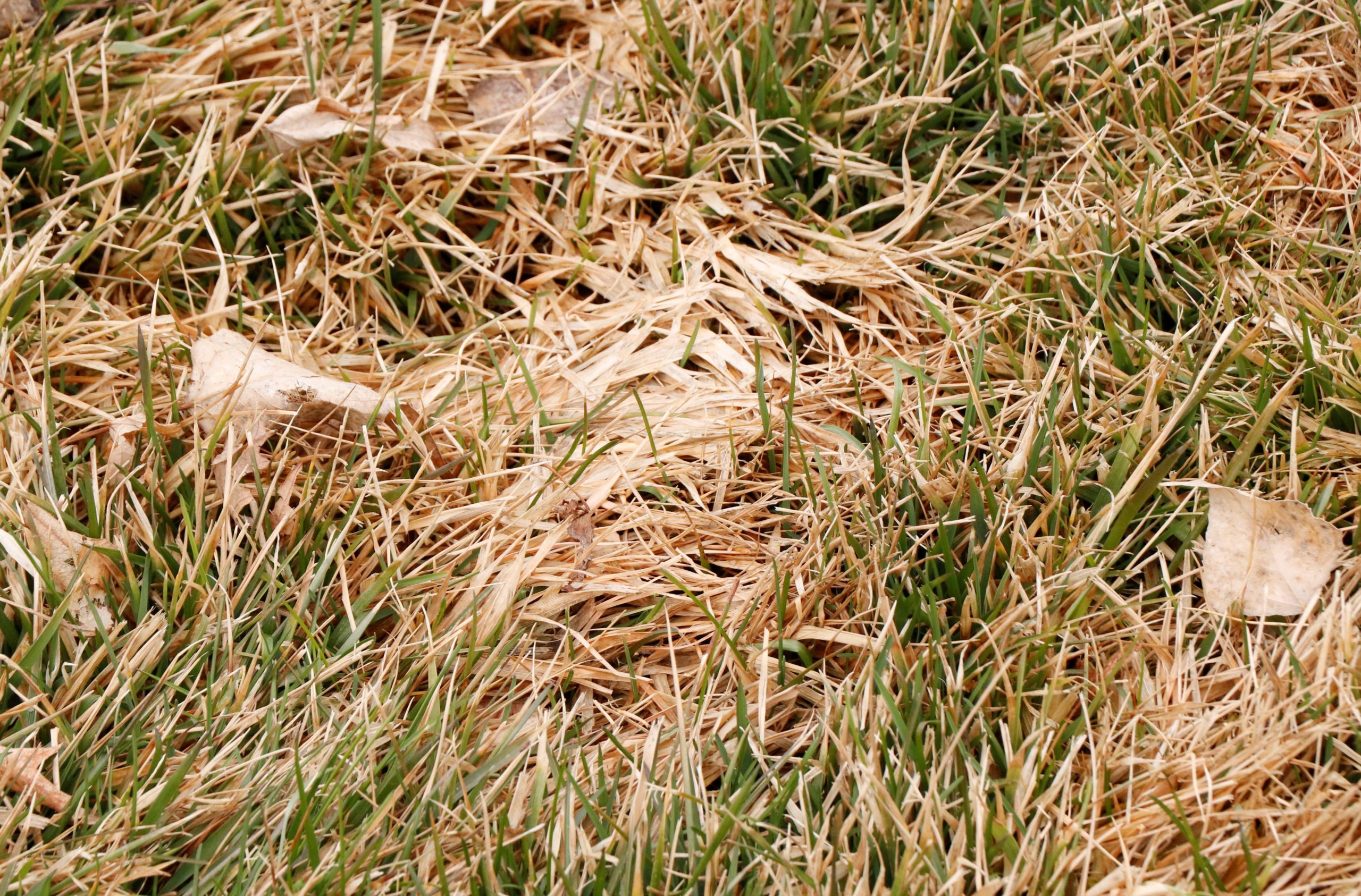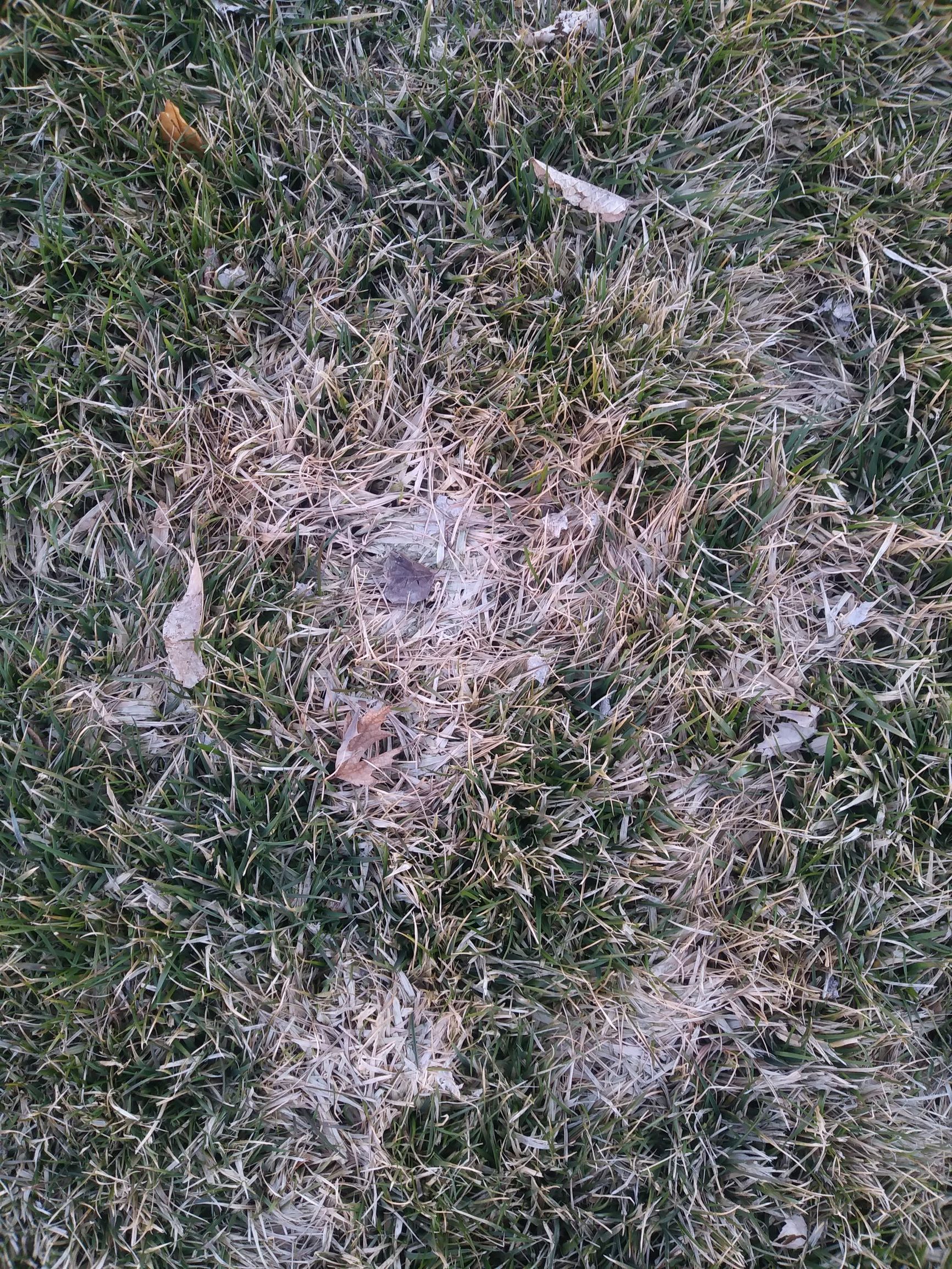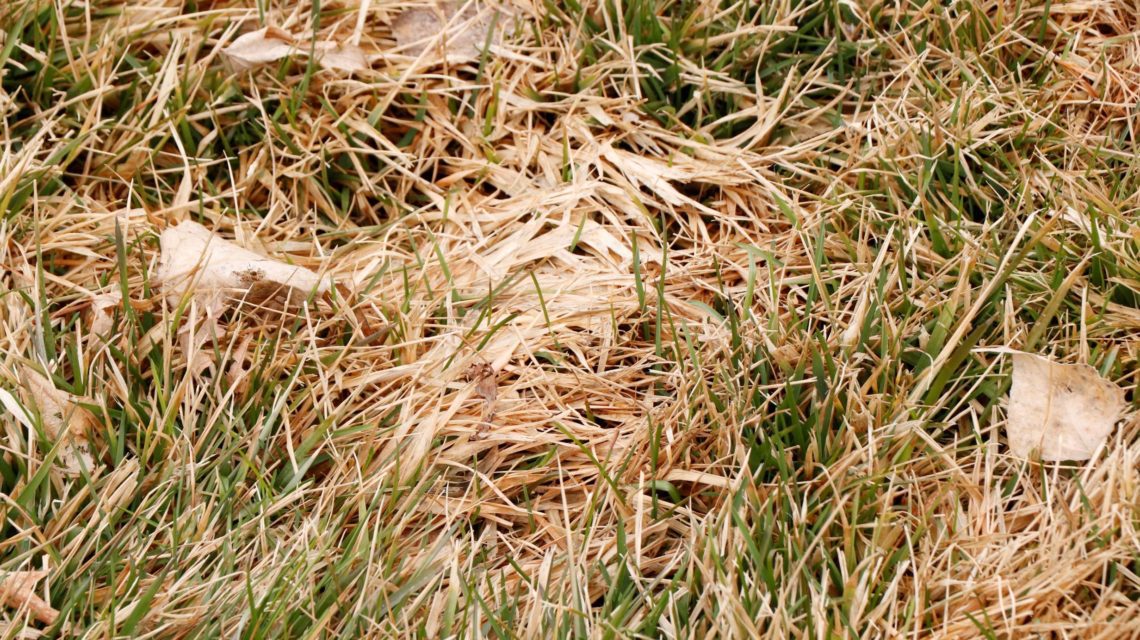Winter is here, and even though your lawn is dormant, stay watchful. Snow molds might take over, turning your healthy lawn into an infested tundra. Snow molds are fungi that affect turfgrasses during winter. The most common types are pink snow mold and gray snow mold. Read on to learn more.
Description of Snow Mold
The fungi attack grass under layers of snow and leaves. Cool, humid environments under blankets of snow and wet leaves are perfect conditions for the molds to grow. Almost all grass types—fescues, bluegrass, ryegrass, etc.—are susceptible to snow molds.
Identifying Snow Mold


Pink snow mold creates 2-inch, brownish-orange circles that can grow to 12 inches wide and can range in color from light gray to tan. Usually, the dead patches have a ring of light pink webbing, called mycelium, on the outer edge. Pink snow mold can also grow under wet debris like leaves (not just under piles of snow).
Gray snow mold initially turns the grass light yellow, like the color of straw. Over time, the grass may turn gray and develop fuzzy mold-like growths on the surface. Gray snow mold needs colder temperatures to grow, so it generally only develops beneath piles of snow that sit for long periods of time.
Treatments for Snow Mold


Snow molds are easier to prevent than to cure. A few tips for preventing snow molds are as follows:
- Remove leaves and grass mulch to help winterize your lawn.
- In the fall, the last time you mow your lawn for the year, cut the grass to 2 inches to prevent it from matting down. This can help prevent snow molds from forming.
- Avoid piling heaps of snow onto grass, especially in shady areas where the snow melts slowly. Piles of snow take much longer to melt, giving snow molds time to grow.
Snow often hides the fungi, so sometimes homeowners don’t know they have snow molds until the snow melts. Lawns with little damage will recover on their own. To get rid of snow mold on your lawn, try the following:
- Remove remaining snow from shaded areas.
- Rake damaged areas to break up the mold.
- Over-seed thinning areas.
Preventative actions are important because gray snow mold will go dormant during the summer and drop into the thatch area. If not treated, snow mold will appear again next winter.
Watch our video for more information about snow mold:
Watching for snow molds and taking necessary actions will prevent the disease from overtaking your yard. If you have trouble identifying snow molds, Stewart’s can help. Call or text us at 801-226-2261 for more information and a free lawn service quote.



